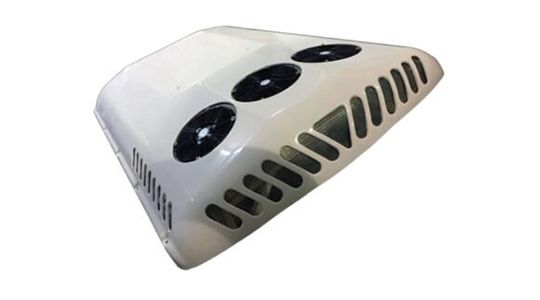Key Differences Between Rooftop and Integrated Bus Air Conditioning Units
Learn More

by
—
2024-06-13

SONGZ SONGZ SONGZ SONGZ
Electric buses are gaining popularity due to their environmental benefits and operational efficiency. One crucial component that ensures passenger comfort in electric buses is the air conditioning system. This article provides a detailed introduction to the electric bus air conditioning system, explaining its components, functionality, advantages, and maintenance requirements.
The electric bus air conditioning system consists of several key components that work together to provide a comfortable environment for passengers.
Compressor
The compressor is the heart of the air conditioning system. It compresses the refrigerant gas, increasing its pressure and temperature. In electric buses, the compressor is typically powered by an electric motor, which is more efficient and quieter than traditional combustion engine-driven compressors.
Condenser
The condenser is responsible for dissipating the heat absorbed by the refrigerant. It is usually located at the front of the bus and works by transferring heat from the refrigerant to the outside air. The refrigerant exits the condenser as a high-pressure liquid.
Expansion Valve
The expansion valve regulates the flow of refrigerant into the evaporator. It reduces the pressure and temperature of the refrigerant, allowing it to absorb heat from the bus interior effectively.
Evaporator
The evaporator is located inside the bus and is responsible for absorbing heat from the passenger compartment. As the low-pressure refrigerant passes through the evaporator, it evaporates, absorbing heat and cooling the air. The cool air is then circulated throughout the bus via the ventilation system.
Electric Motors and Fans
Electric motors and fans are essential for circulating air through the system and ensuring efficient heat exchange. They help distribute cool air inside the bus and facilitate the dissipation of heat from the condenser.
The electric bus air conditioning system operates on the principles of refrigeration and thermodynamics. The process begins with the compressor, which compresses the refrigerant, causing it to heat up. The hot, high-pressure refrigerant then flows to the condenser, where it releases heat to the outside air and condenses into a liquid.
Next, the liquid refrigerant passes through the expansion valve, where its pressure and temperature are reduced. The low-pressure refrigerant then enters the evaporator, where it absorbs heat from the bus interior and evaporates. The cool, low-pressure refrigerant then returns to the compressor to repeat the cycle.
This continuous cycle of compressing, condensing, expanding, and evaporating refrigerant effectively removes heat from the bus interior, maintaining a comfortable temperature for passengers.
Electric bus air conditioning systems offer several advantages over traditional systems powered by internal combustion engines.
Energy Efficiency
Electric air conditioning systems are more energy-efficient than their traditional counterparts. They can be precisely controlled to match the cooling demand, reducing energy consumption and enhancing overall efficiency.
Environmental Benefits
Electric buses produce zero tailpipe emissions, contributing to cleaner air and reduced greenhouse gas emissions. Electric air conditioning systems further enhance these environmental benefits by using eco-friendly refrigerants and reducing the overall energy footprint of the bus.
Reduced Noise
Electric compressors and fans operate more quietly than traditional engine-driven components, providing a quieter and more comfortable ride for passengers.
Reliability and Maintenance
Electric air conditioning systems have fewer moving parts than traditional systems, resulting in lower maintenance requirements and increased reliability. The absence of belts and pulleys reduces the risk of mechanical failures and simplifies maintenance procedures.
Proper maintenance is essential to ensure the longevity and performance of the electric bus air conditioning system.
Regular Inspections
Regular inspections should be conducted to check for refrigerant leaks, clean or replace filters, and ensure the proper functioning of all components. Inspections should be performed by trained technicians familiar with electric bus air conditioning systems.
Refrigerant Management
Proper refrigerant management is crucial for maintaining system efficiency and environmental compliance. Regular checks for refrigerant levels and leaks should be conducted, and any detected leaks should be repaired promptly.
Electrical System Checks
Since the air conditioning system relies on electric motors and controls, regular checks of the electrical system are necessary. This includes inspecting wiring, connectors, and control units for any signs of wear or damage.
The electric bus air conditioning system is a vital component that ensures passenger comfort and contributes to the overall efficiency and environmental benefits of electric buses. By understanding its components, functionality, advantages, and maintenance requirements, operators can optimize the performance and reliability of their electric bus fleets. For more information on electric bus air conditioning systems or to discuss your specific needs, please contact us. As a trusted supplier of advanced air conditioning solutions, we are committed to providing high-quality products and expert support.



R&D strength
About
Join us


Copyright ©2023 SONGZ, All Right Reserved.